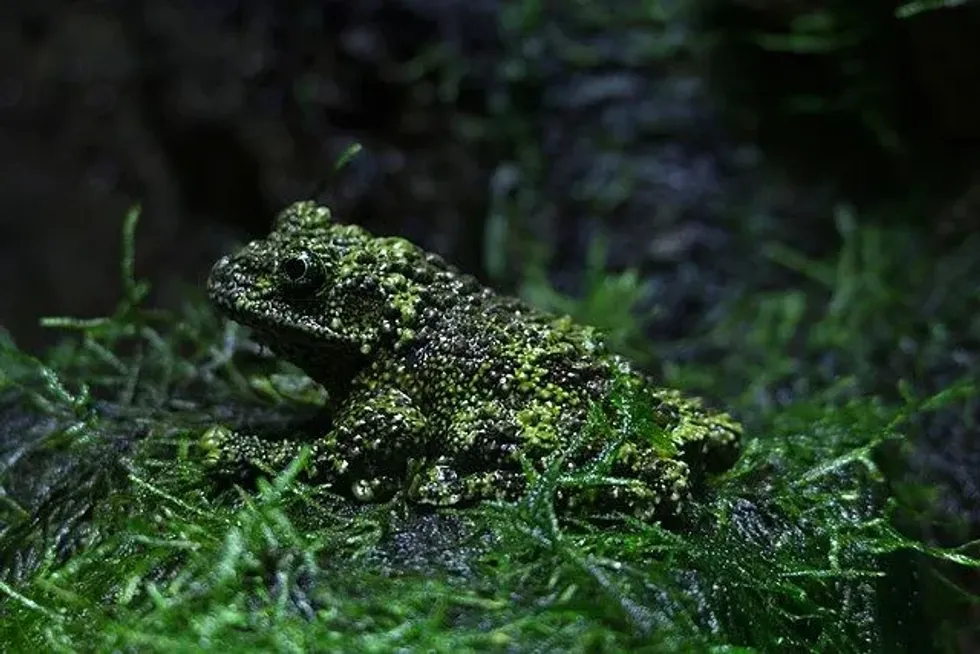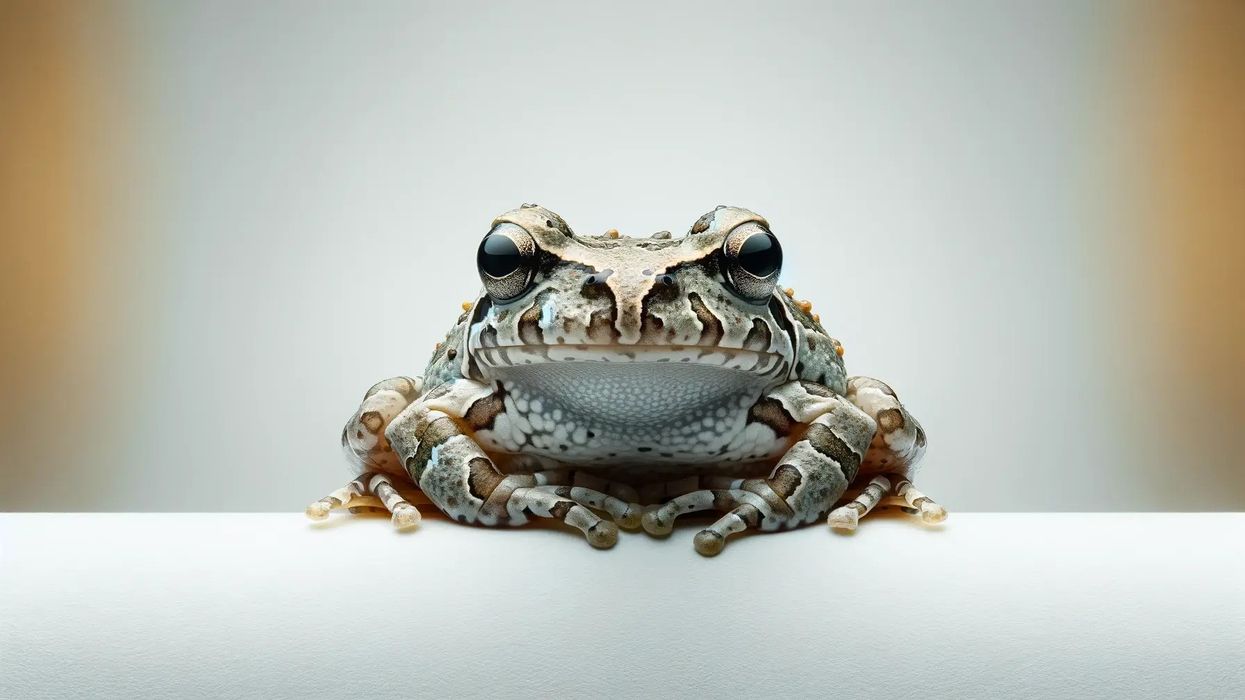Are you a lover of frogs? Then be ready to be amazed to the fullest.
We have facts about one of the most unique frogs that are present on the planet. A master of disguise and camouflage, we present to you the Vietnamese mossy frog, also known as Theloderma corticale.
Mossy frogs prefer staying among themselves as they are very shy in nature. They shouldn't be handled unless it is absolutely necessary.
Mossy frogs are nocturnal animals and thus their calls are most likely to be heard during the night. The Vietnamese mossy frog gets its common name from the camouflaging abilities that it uses to hide from predators.
Be prepared to get bamboozled as to how these frogs look like a clump of moss and throw off their predators by using vocal maneuvers. The female even lays the eggs above water to provide the eggs shelter from foreign predators.
In this article, you will find all the information about the Vietnamese mossy frog habitat, Vietnamese mossy frog life span, Vietnamese mossy frog care, Vietnamese mossy frog call, Vietnamese mossy frog tank set up, Vietnamese mossy frog enclosure, Vietnamese mossy frog camouflage, Vietnamese mossy frog eggs, Vietnamese mossy frog breeding facts, and other cool, adult Vietnamese mossy frog information.
If you find our article informative and interesting then do continue reading. We have other interesting frog articles on the giant frogfish and African bullfrog.
Vietnamese Mossy Frog Interesting Facts
What type of animal is a Vietnamese mossy frog?
The Vietnamese mossy frog (Theloderma corticale), as evident from its name, is a frog. This animal falls under the family Rhacophoridae of the Anura order.
What class of animal does a Vietnamese mossy frog belong to?
The Vietnamese mossy frog, like all other frogs, falls under the class Amphibia of the Animalia kingdom.
How many Vietnamese mossy frogs are there in the world?
There is very little information and data that can help us in getting a clear picture of the exact number of Vietnamese mossy frogs that are currently present on the planet.
Though there is very limited data, these species were spotted on numerous surveys that were conducted in Vietnam.
There is quite a number of these species of frogs that have been kept in captivity like in zoos and by private collectors. Taking a close look at their conservation status and the trend of the population can also give us a brief idea about the population of the Vietnamese mossy frog.
The International Union for Conservation of Nature or the IUCN Red List has listed these animals as Least Concern, however, there has been a constant decrease in their population owing to deforestation and loss of habitat by numerous human activities.
Where does a Vietnamese mossy frog live?
As evident from the name of this species of frog, the Vietnamese mossy frog is found in Vietnam, especially in Northern Vietnam along with few other places in China. These frogs are found in thick and dense evergreen rainforests.
What is a Vietnamese mossy frog's habitat?
The primary habitat of these semi-aquatic is the thick and dense evergreen forests of northern Vietnam and a few portions of China.
Some places where these frogs are found in abundance or the natural living space of these frogs are flooded caves along with cozy hiding spots under floating plants and submerged rocks. The preferable habitat of these frogs lies at an elevation of 2,300-3,280 ft or 700-1,000 m approximately above sea level.
The evergreen forests in these regions have a range from the tropical zone to the temperate zone.
Who do Vietnamese mossy frogs live with?
Not much information is known about the social behavior of the Vietnamese mossy frogs. However, like most species of frogs, these amphibians also prefer staying in large groups. All throughout their habitat, these frogs are also found to enjoy the company of one another and thereby form large groups.
How long does a Vietnamese mossy frog live?
Due to a lack of research, there is not much data that accurately gives us the lifespan of the Vietnamese mossy frog. However, if these frogs are captive bred in zoos, then the frogs live for over five years and it is estimated that these captive-bred Vietnamese mossy frogs can live for 10 years.
If ideal conditions are provided in their captivity it is estimated that this species of captive-bred frogs can even live up to 20 years.
How do they reproduce?
The Vietnamese mossy frogs (Theloderma corticale) are known to have their breeding season in the months of April and June. These frogs are known to mate inside the rock cavities and the females lay the eggs above water to provide shelter from foreign predators.
These animals are known to have a clutch size of 8-10 eggs. These eggs take around one to two weeks before finally hatching.
Owing to the placement of the eggs, the newly hatched tadpoles drop into the water.
Since all frogs undergo metamorphosis, this process is also not an exception for the Vietnamese mossy frogs. These frog species also undergo the complete transformation from a young one to an adult i.e metamorphosis within a period of roughly around three months.
What is their conservation status?
The International Union for Conservation of Nature or the IUCN Red List has listed this species of animals as Least Concern.
Though these animals don't face any imminent harm and are not on the verge of being extinct, the population of these frogs is constantly on the decline. The primary source for the decline in the population is human activities like deforestation, destruction of their habitat, and other incidents like climate change and illegal pet trade.
The illegal pet trade has become a problem for many other species of frogs too.
Vietnamese Mossy Frog Fun Facts
What do Vietnamese mossy frogs look like?

As evident from their name, a clump of moss is the best way to describe these frogs. These frogs are green in color accompanied by numerous dark and black spots, that are spread all over the body.
The presence of spikes and tubercules on their skin makes it a rough-skinned animal, unlike other species of frogs. Owing to their dsiguised appearance they are over overlooked and not identified easily.
These frogs have some distinctive pads on their toes. These pads are highly adhesive in nature and thereby give them the access to easily climb trees and rocks to escape and hide conveniently around the trees and rocks from their attackers.
How cute are they?
Though these frogs are tiny, they cannot be considered cute animals. With moss growing all over their body, people often find them to be hideous.
How do they communicate?
The communication techniques used by the Vietnamese mossy frog (Theloderma corticale) are extremely unique and are rarely seen in similar species. These frogs are known to be masters at camouflage thereby earning them a way to survive in the wild.
They communicate via means of vocal communication. The croaks of these frogs can be modulated by the frog itself and they can make their voice and sound appear from far away, or say about 10-13 ft (3.5-4 m), thereby making them impossible to locate out in their natural wilderness.
How big is a Vietnamese mossy frog?
The Vietnamese mossy frog (Theloderma corticale) is an average species of frog. The size of these frogs is roughly about 3.5 in (8.9 cm) in length. In comparison to an adult normal frog (2.4-3.5 in or 6.1-8.9 cm), they are almost similar to the size of the Vietnamese mossy frog.
How fast can a Vietnamese mossy frog swim?
There is no data or information which tells us correctly about the speed at which the Vietnamese mossy frog swims. However, since these frogs are semi-aquatic in nature, they are assumed to be expert swimmers.
How much does a Vietnamese mossy frog weigh?
There is no data that gives us the weight of the Vietnamese mossy frog aka Theloderma corticale. Since the Rhacophoridae family has numerous species that are similar and alike we can make a guess about their weight. These small animals usually weigh around 1.8 oz (51 g).
What are the male and female names of the species?
The male and female of the species have no specific name that has been assigned to them, and thus they are referred to as a male Vietnamese mossy frog and a female Vietnamese mossy frog. The collective noun of frogs is highly interesting. A group of frogs is called an army.
What would you call a baby Vietnamese mossy frog?
Baby frogs are known as froglets and thus in the case of these frogs, the baby would be termed as a Vietnamese mossy froglet. After the hatching of the eggs, the little ones are called tadpoles, so a baby Vietnamese mossy frog can also be referred to as a tadpole.
What do they eat?
These frogs are carnivorous animals or more specifically their feeding habit is mainly insectivorous. The only component in the diet of these frogs is insects. A wide range of insects like earthworms, crickets, cockroaches serves as the diet of these frogs that mainly live under floating plants.
Are they poisonous?
There is no information that suggests whether these frogs are poisonous or not.
Would they make a good pet?
Yes, these frogs make very good pets. However, since they are extremely shy animals, and they should not be taken away from their wild habitat, it is advised not to keep them as pets.
These animals are known to survive well in captivity if ideal conditions are met. If these frogs are to be kept at home in an aquarium or a tank enclosure, then the proper conditions of their habitat i.e.
the temperature of a forest environment should be replicated. Their ideal temperature is below 75 F (23 C), but this temperature should also not get lower than 50-60 F (10-15 C).
Did you know...
Whenever these frogs feel afraid or are threatened, they are known to curl into a ball or fold into a ball, so as to avoid the sight and the attention of predators.
Batrachochytrium dendrobatidis is a fungus that is known to severely affect the health of these frogs.
How does a Vietnamese mossy frog protect itself?
These frogs are masters of disguise and camouflage. Owing to their look itself they are mistaken for moss. Moreover, if these animals ever face any danger they start to play dead.
How many species are there in the Vietnamese mossy frog's family?
Vietnamese mossy frogs are part of the family Rhacophoridae. This is the family of Old World tree frogs. It is hard to give an exact number of how many species are within this family as species are always being classified and reclassified. However, it is thought there are more than 300 species of frogs in the family Rhacophoridae.
Here at Kidadl, we have carefully created lots of interesting family-friendly animal facts for everyone to discover! Learn more about some other amphibians from our poison dart frog and Surinam toad facts pages.
You can even occupy yourself at home by coloring in one of our free printable Vietnamese Mossy Frog coloring pages.









